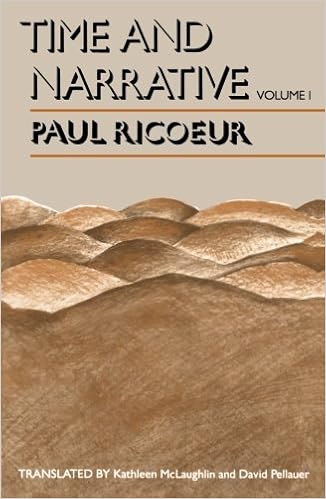
By Paul Ricoeur
Ricoeur unearths a "healthy circle" among time and narrative: time is humanized to the level that it portrays temporal adventure. Ricoeur proposes a theoretical version of this circle utilizing Augustine's thought of time and Aristotle's conception of plot and, extra, develops an unique thesis of the mimetic functionality of narrative. He concludes with a complete survey and critique of recent discussions of ancient wisdom, realizing, and writing from Aron and Mandelbaum within the past due Nineteen Thirties to the paintings of the Annales tuition and that of Anglophone philosophers of background of the Nineteen Sixties and 1970s.
"This paintings, for my part, places the entire challenge of narrative, let alone philosophy of historical past, on a brand new and better aircraft of discussion."—Hayden White, History and idea
"Superb. . . . an exceptional element of front into the paintings of 1 of the eminent thinkers of the current highbrow age."—Joseph R. Gusfield, Contemporary Sociology
Read or Download Time and Narrative, Volume 1 (Time & Narrative) PDF
Similar Phenomenology books
Phenomenology, including Marxism, pragmatism, and analytic philosophy, ruled philosophy within the 20th century—and Edmund Husserl is generally inspiration to were the 1st to advance the idea that. His perspectives stimulated quite a few vital later thinkers, equivalent to Heidegger and Merleau-Ponty, who finally grew to become phenomenology clear of questions of data.
The philosophical paintings of Jean-Luc Marion has opened new methods of talking approximately non secular convictions and reviews. during this exploration of Marion’s philosophy and theology, Christina M. Gschwandtner provides a entire and important research of the guidelines of saturated phenomena and the phenomenology of givenness.
The New Science of the Mind: From Extended Mind to Embodied Phenomenology (Bradford Books)
There's a new state of mind concerning the brain that doesn't find psychological tactics solely "in the top. " a few imagine that this elevated notion of the brain would be the foundation of a brand new technological know-how of the brain. during this e-book, prime thinker Mark Rowlands investigates the conceptual foundations of this new technological know-how of the brain.
Additional info for Time and Narrative, Volume 1 (Time & Narrative)
Lets answer effectively to the lack of abstraction provided that, by means of giving up the try and take as a kick off point for our research metalanguages that current a definite logical coherence and utilizing types akin to those to explain texts, we have been to look for theories that account for our literary competence, that's, the capability readers have for spotting and summing up plots, and for grouping related plots jointly. seventy four If we have been therefore to undertake the rule of thumb of following heavily the adventure of the reader within the strategy of organizing step by step the weather of the instructed tale with a purpose to positioned a plot jointly, we might come across the notions of standpoint and voice much less as different types outlined by means of their position in a taxonomy than as a particular function, taken from a vast constellation of alternative positive aspects and outlined by way of its position within the composition of the literary paintings. seventy five As for the objection of incompleteness, it is still with out a completely passable resolution in a procedure that multiplies the types of transition with no ever relocating outdoor the circle that's imperiously ruled by way of the 3 narrative situation-types. for instance, it doesn't appear that sufficient weight is given to the key characteristic of narrative fiction exemplified via its skill to give a 3rd individual as a 3rd individual, in a approach within which the 3 narrative situation-types stay diversifications of the narrator’s discourse, reckoning on even if it simulates the authority of the true writer, the perspicacity of a reflector, or the reflexivity of a topic endowed with a superb reminiscence. accordingly it sounds as if what the reader can establish as viewpoint or as voice has to do with the way in which the bipolar relation among the narrator and the nature is handled while the precise narrative recommendations are used. those sequence of serious comments utilized to the typology of narrative events recommend that the notions of standpoint and voice should be approached, at the one hand, with out a very taxonomical problem, as self reliant good points attribute of the composition of narrative fictions and, nonetheless, in direct relation to that significant estate of narrative fiction, that is the truth that it produces the discourse of a narrator recounting the discourse of fictional characters. seventy six perspective, i'm going to say, designates in a 3rd- or first-person narrative the orientation of the narrator’s angle towards the characters and the characters’ atitudes towards each other. This impacts the composition of the paintings and is the thing of a “poetics of composition,” as soon as the potential of adopting variable issues of view—a estate inherent within the very proposal of aspect of view—gives the artist the systematically exploited chance of various issues of view in the similar paintings, of multiplying them, and of incorporating those mixtures into the configuration of the paintings. The typology provided by way of Boris Uspensky bears completely on those assets of composition supplied via viewpoint.



